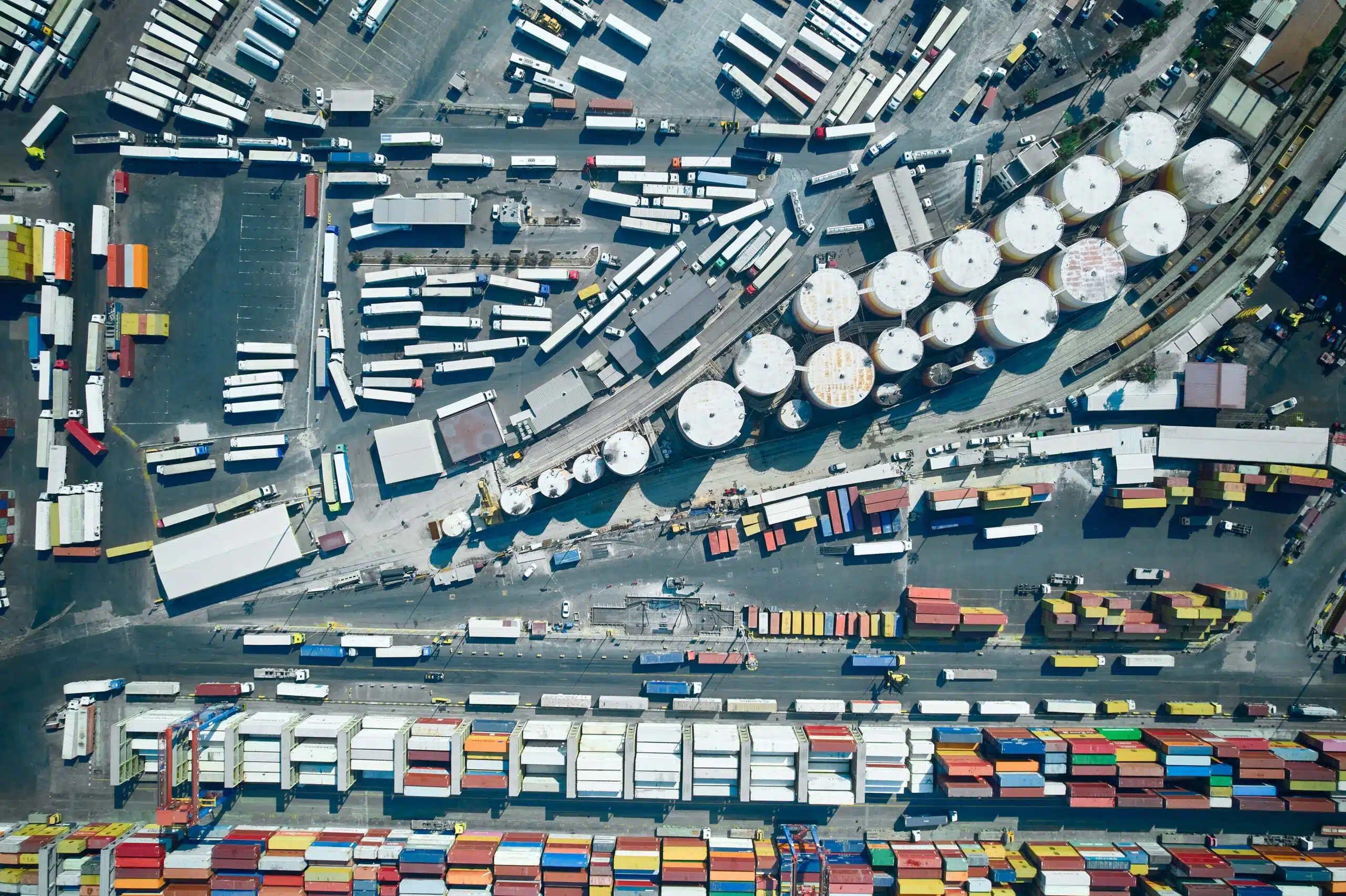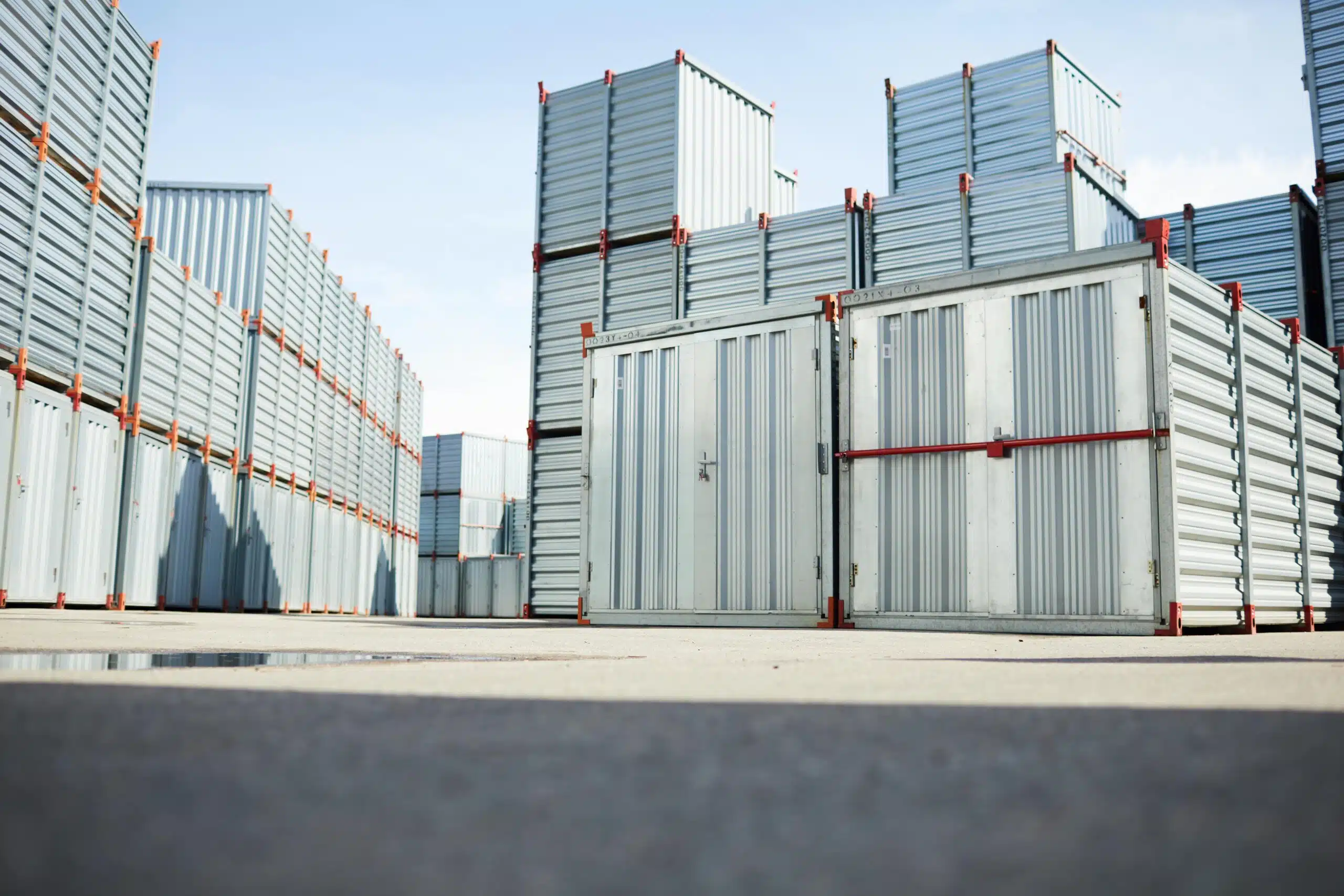- August 13, 2025
- Perspectives
Key Trends Shaping Industrial Outdoor Storage in the Post-COVID Era


Dave France, PE
Industrial Practice Lead

Dan Gallagher, PE
Civil Engineer
In the early 2020s, industrial outdoor storage (IOS) emerged as a solution to accommodate the increased consumer demand exacerbated by the COVID-19 pandemic and ensuing supply chain issues. At its height, the largest driver in this accelerated growth was freight—and existing buildings in the market couldn’t accommodate the volume of goods in demand. IOS became the stopgap to accommodate this surplus of goods and the trucks needed for their transportation.
As this peak has passed, the future of IOS and its projected benefits have become more malleable alongside the evolving industrial and shipping landscapes. Read on to hear about recent IOS trends and projected future changes.
Key Geographic Markets for IOS Growth: DFW and Southern California
Demand for IOS sites has grown considerably in key market areas, namely Dallas-Fort Worth (DFW) and Southern California. In DFW, one of the United States’ major transportation centers, the IOS market has grown to match the city’s rapid expansion and development in logistics and manufacturing. This has attracted businesses seeking strategic locations for warehousing and distribution, and IOS has played a crucial role in accommodating their operational needs. Certain submarkets, like Southeast Dallas, have experienced recent industrial growth due to their proximity to rail, making the IOS market a natural fit to help facilitate that surge.
In Southern California, manufacturing reshoring, global trade, and the sustained growth of e-commerce have continued to drive the need for effective storage and logistics solutions, and IOS plays a crucial role in supporting supply chains and facilitating commerce. Additionally, states with major logistics hubs like Florida, Maryland, New Jersey, and Virginia are experiencing ongoing demand for IOS, highlighting how the importance of last-mile delivery— the stage of moving goods from a transportation hub to their final destination—will continue to drive the desire for IOS.
Supporting E-commerce Growth with Ports
During the COVID-19 pandemic, the lack of stock and backstock led to reshoring and nearshoring conversations across the industrial industry. During this time, ports across the country improved their operations and organization to better alleviate the pressures of increased consumer demand and the resulting surplus of inventory. With better automation and scheduling, ports began to run more efficiently, lessening the need for buffer areas such as IOS.
Although the supply chain delays caused by this e-commerce boom have lessened, e-commerce has continued along with the adoption of just-in-time inventory systems to drive American shopping, manufacturing, and shipping trends—making ports a key lynchpin in the future need for IOS. E-commerce growth has led to record import volumes at US ports, increasing the demand for nearby land to help ease congestion and store containers. Demand for container storage remains high in coastal markets, particularly the Ports of Los Angeles and Long Beach.
The New Future of Industrial Outdoor Storage
As large parcels of land in proximity to ports, rail, and other key infrastructure, IOS lots sit at a critical junction and are valuable real estate. With the $1.2-trillion 2021 Infrastructure Investment and Jobs Act that is poised to further modernize roadways, bridges, ports, waterways, and freight rail across the US, demand for IOS will likely increase in industries that rely on its

operations, including construction, material supply, and equipment leasing.
Design and Zoning Considerations
Design and zoning considerations for industrial outdoor storage are crucial to ensure operational efficiency and compliance with local regulations. Local governments require these areas to be specifically zoned for industrial use, with zoning laws dictating the types of activities allowed, maximum building height, setback requirements, and how much of the site can be built upon. Design elements should include appropriate drainage systems to prevent water accumulation and pollutants, security measures to safeguard stored materials, and accessibility features to facilitate smooth operations.
Trucking Regulations and Trends
Evolving trucking regulations have additionally shaped the IOS market. Compliance requirements, like Hours of Service limitations and stricter emissions standards, have increased demand for IOS facilities. The mandate for Electronic Logging Devices has heightened the demand for IOS facilities where drivers can rest or stage trucks, as well as manage logistics more precisely. Cross-docking operations, where goods are unloaded from incoming trucks and directly loaded onto outbound trucks, often necessitate large open spaces provided by IOS facilities. Additionally, as the increased demand for logistics services continues, expanded fleets necessitate more space for parking, maintenance, and storage.
Environmental Benefits
IOS offers environmental benefits, as the facilities reduce energy usage, lower carbon emissions, and often feature water recycling and solar power. IOS not only offers solutions for the complexities of today’s industrial market but also meets the requirements for businesses looking toward greener solutions.
The Effect of Tariffs
With fluctuating tariffs, there may be an increased demand for IOS as storage strategies shift and companies need to maintain operational flexibility. Businesses may preemptively import goods to avoid tariff hikes, leading to increased inventory levels and a need for additional storage space. Supply chain disruptions due to tariffs have also caused businesses to seek temporary storage solutions, making IOS near ports, rail hubs, and major highways crucial. Finally, companies may relocate manufacturing operations, resulting in temporary or permanent storage needs for equipment and materials.
In instances when IOS is no longer needed for its original purpose, institutional investors have begun to buy and “flip” IOS lots for a profit, thereby creating a new asset class. With the growth of data centers and AI, utility companies are significant drivers in today’s IOS market due to their need for short-term laydown areas for equipment.
The IOS industry offers diverse solutions across various sectors and is poised to continue offering attractive investment opportunities and meeting the evolving needs of consumers. As an experienced engineering consulting firm, we can help you navigate these complexities and create successful industrial outdoor storage facilities that maximize your return on investment.
About the Experts

Dave France, PE
Dave is a civil engineer with more than 30 years of experience in commercial and industrial developments, including high-profile projects for clients such as the US Navy Exchange, Ace Hardware, BMW, and large e-commerce and traditional retailers. His work spans master planning, schematic design, site selection, feasibility studies, and roadway design in a variety of market sectors, including commerce and industrial parks, warehousing and logistics, office, industrial, education, healthcare, hospitality, airport, retail, mixed-use, and multi-family and single-family residential.

Dan Gallagher, PE
Dan is an engineering consultant with more than 10 years of experience leading industrial land development projects across Texas and the Southwest with a focus on the DFW market. Serving as a project manager or project analyst at industrial parks, commercial and mixed-use developments, and a host of other development sites, Dan is accomplished in utility coordination, permitting, site planning, environmental, construction phase services, and construction staking.
